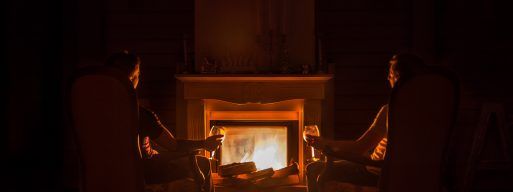A Safety Guide for Your Wood-Burning Fireplace & Wood Inserts
It’s starting to be that time of year where we’re opting for hot cocoa over iced tea, and warm sweaters over tank tops. And with cooler Ottawa weather comes warm evenings by a crackling fire in your wood-burning fireplace or wood inserts.
Nothing quite beats the sound, look, and feel of a wood fire! But before you spark up the first fire of the season in your home, you’re going to have to take a few steps to keep things safe and clean.
Have A To-Do List for Both the Chimney and Fireplace
As tempting as it might be to build a fire during one of the first cool evenings of fall, you could be putting yourself and your home in danger if you haven’t kept up with maintenance and cleaning. Take some time to create a to-do list, like this one, to ensure your fireplace is safe to use before sparking that first flame.
Get an Inspection
Both fireplaces and wood stoves require annual inspections to ensure they are working safely and efficiently. You can inspect your own fireplace, but if you’re not comfortable doing so, there are plenty of professional services out there who can handle the job for you. You can also hire a professional chimney sweep, or chimney cleaner, to inspect and clean your chimney and fireplace and inform you of any damage that needs immediate repair.
Check Fire Alarms and Carbon Monoxide Detectors in Your Home
While this is an important task year-round, it is especially necessary to test your smoke alarms and carbon monoxide detectors before the fireplace season. Even if you’re an old hand when it comes to fireplaces in your home, you can never be too cautious when it comes to having fires in your home.
Keep the Chimney Clean and Capped
A chimney should be cleaned at least once a year, and preferably before the fireplace season. Animals tend to nest in chimneys, leaving behind twigs, leaves, and other debris. There may also be a build-up of soot and creosote from the last fireplace season.
To prevent a dangerous chimney fire—which could spread to the rest of your home—get your chimney cleaned and capped (if it isn’t capped already) before using it. Chimney caps, also known as chimney toppers, help keep out moisture, animals, and debris. And if made of mesh wire, they also help prevent fires since the mesh acts as a barrier for flying embers.
Check the Flue Damper
You’ll want to make sure your flue damper is working properly before starting a fire. The flue damper is what keeps the warm air in your home when your fireplace isn’t in use. And when opened for a fire, the damper lets the smoke leave through the chimney instead of smoking up your home.
So open and close the damper during the day and look up your chimney. It should allow daylight in when opened, and no light in when closed. You can also double-check with a flashlight.
Check for Damage in Both the Chimney and Fireplace
An inspection will also check for damage to the structure of the chimney and fireplace. Cracks in the flue can cause serious fire risks. While damaged mortar and loose bricks will let moisture into your chimney system and cause moisture damage. Make sure to repair any damage discovered during the inspection before using your fireplace.
Tips for Building A Fire
While building a fire may seem pretty straightforward, there are ways to build a fire to ensure it burns efficiently and safely.
Don’t Overload
Using too many logs will not only waste firewood, but it will also create a hotter, more dangerous fire. A too-hot fire can damage the flue and cause too much creosote buildup, a chimney fire, and poor ventilation of carbon monoxide.
Wood Placement
The number one tip for how to stack wood in a fireplace is to place the logs at the back of the fireplace on a metal grate. The further back the fire, the better the smoke ventilation up the chimney instead of into your home. Also, don’t use flammable liquids to ignite the fire. These are very dangerous. Instead, light kindling underneath or on top of the logs.
Only Burn Seasoned Hardwood
Seasoned (completely dried) hardwood makes for more efficient fires. Use hardwood such as oak that has dried for at least six months. Make sure to store firewood in a dry place sheltered from the elements. Unlike freshly-cut, green wood, seasoned wood prevents smoke from filling up your home. Seasoned wood also doesn’t leave as much creosote in the chimney.
Compared to softwood, hardwood also burns much longer. But if you want a shorter fire, then opt for seasoned softwood. That said, avoid resinous softwood, like pine, as this will also create more flammable creosote.
Use a Spark Guard
Always close the spark guard or the glass fireplace doors if you have them. These barriers will prevent embers from flying out of the fire and burning people, pets, and combustible materials in your home.
Check the Firebox
Inspect your firebox for damage to the bricks and mortar, and also for soot and creosote build-up. You will need to clean the soot and creosote and have any damages repaired before building a fire.
Clean the Area
Make sure the area surrounding the fireplace hearth is clear at all times during the fireplace season. And be extra cautious of keeping combustible materials far away, such as paper, wood, and Christmas trees.
Once your wood-burning fireplace is cleared for use and you’ve mastered the art of building a safe and efficient fire, you can relax by the warm, cozy fire all fall and winter knowing your fireplace and home are safe.

